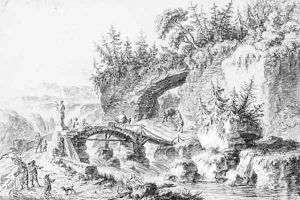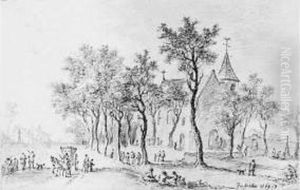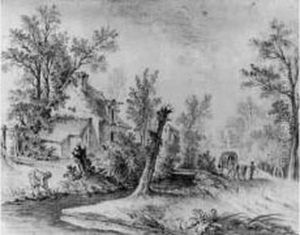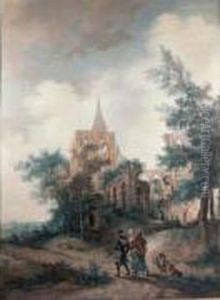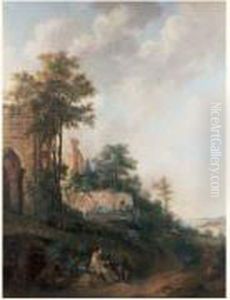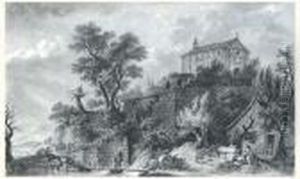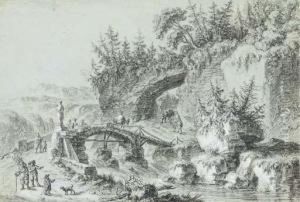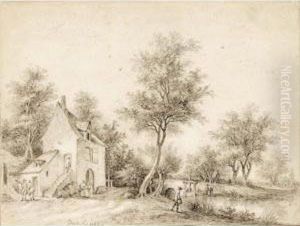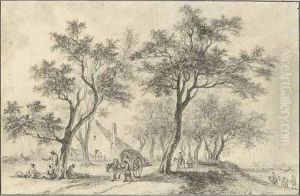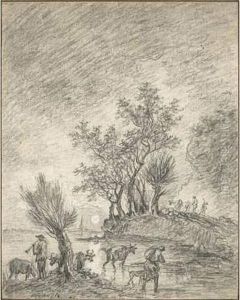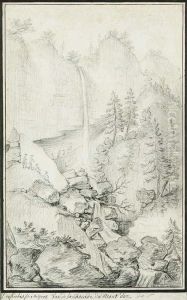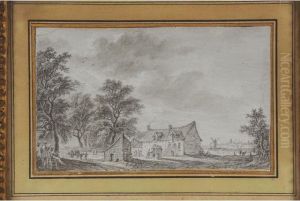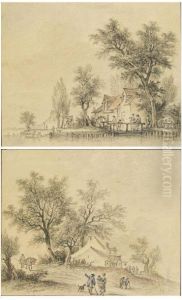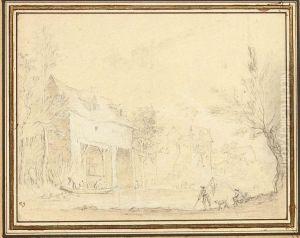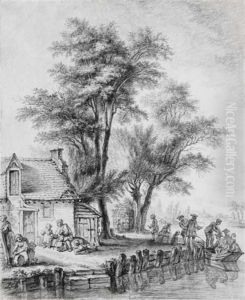Aignan-Thomas Desfriches Paintings
Aignan-Thomas Desfriches was a French artist born in Orléans in 1715. He was not only a painter but also a talented draughtsman and writer, making significant contributions to the French artistic scene of the 18th century. Coming from a wealthy family, Desfriches had the privilege of pursuing his passion for art from a young age. He was initially trained by local artists in his hometown before moving to Paris to further his studies. In Paris, Desfriches became part of the vibrant artistic community, honing his skills and developing a unique style that blended classical elements with a burgeoning Rococo influence.
Despite the opportunities in Paris, Desfriches chose to return to Orléans where he spent the majority of his career. There, he established himself as a prominent figure in the local art scene, contributing not only through his artworks but also through his involvement in the establishment of various cultural institutions. He was deeply engaged in the intellectual and artistic life of his city, organizing exhibitions and participating in the creation of art societies.
Desfriches' work is characterized by its delicate execution and attention to detail, often focusing on landscapes, portraits, and still lifes. His landscapes, in particular, are noted for their serene beauty and precise depiction of nature, reflecting the Enlightenment's growing interest in the natural world. He also had a keen interest in scientific illustration, which is evident in his detailed studies of animals and plants.
Beyond his contributions to painting and drawing, Desfriches was also known for his writings on art theory and criticism. He was an advocate for the importance of observation in art, arguing that artists should closely study nature and the world around them to accurately represent their subjects. This philosophy was influential in his time and contributed to the evolving discussion on the role of art and the artist in society.
Aignan-Thomas Desfriches passed away in 1800, leaving behind a legacy that has been somewhat overshadowed by his more famous contemporaries. However, his work remains an important part of the French art history of the 18th century, reflecting both the aesthetic shifts of the period and the broader intellectual currents of the Enlightenment. His contributions to art, both in practice and theory, continue to be studied by art historians, offering insights into the rich cultural landscape of his time.
